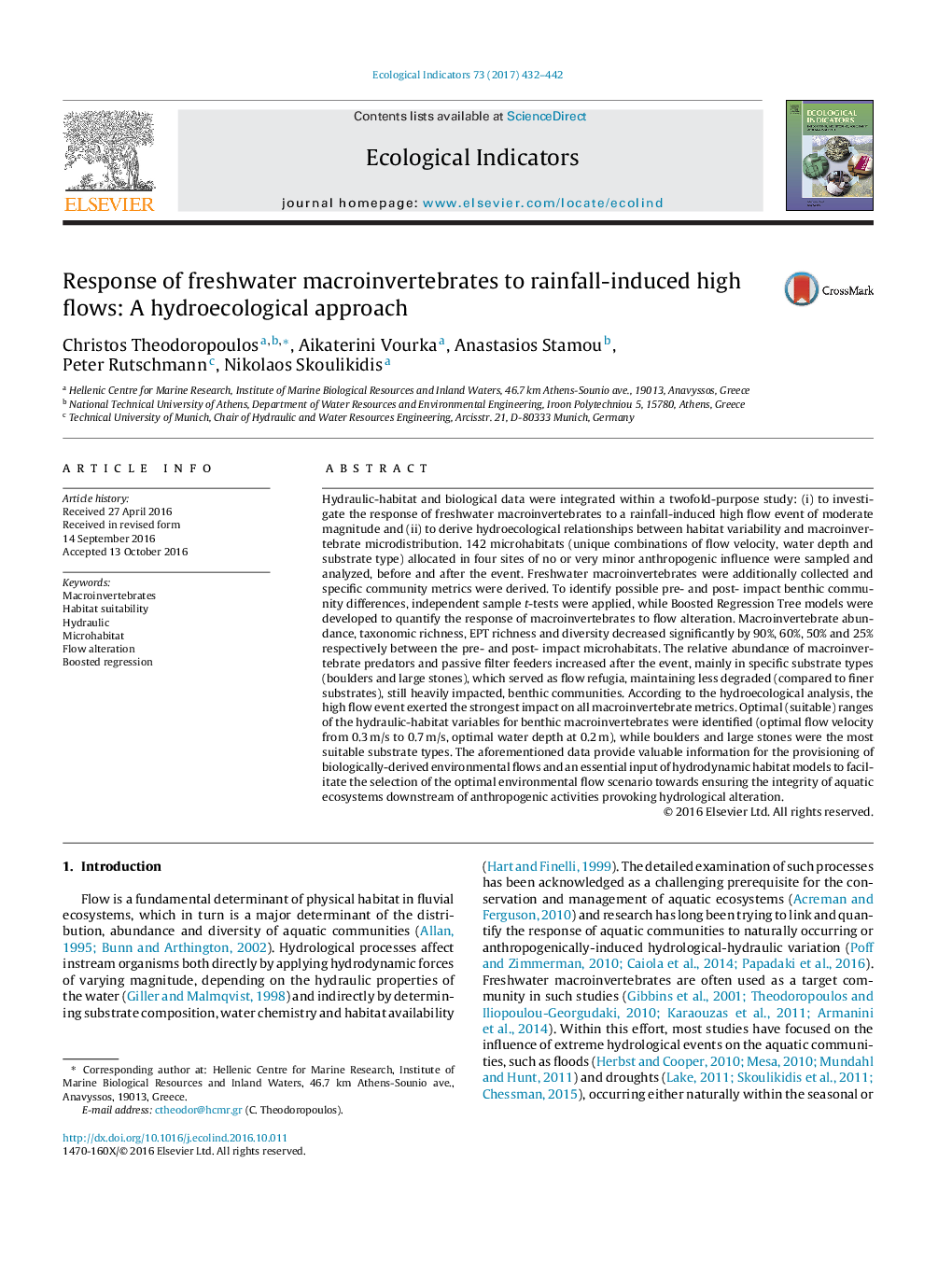| کد مقاله | کد نشریه | سال انتشار | مقاله انگلیسی | نسخه تمام متن |
|---|---|---|---|---|
| 6292614 | 1617129 | 2017 | 11 صفحه PDF | دانلود رایگان |
عنوان انگلیسی مقاله ISI
Response of freshwater macroinvertebrates to rainfall-induced high flows: A hydroecological approach
ترجمه فارسی عنوان
واکنش آب شیرین به آب و هوای گرم به علت بارندگی بالا: رویکرد هیدروکولوژیکی
دانلود مقاله + سفارش ترجمه
دانلود مقاله ISI انگلیسی
رایگان برای ایرانیان
کلمات کلیدی
موضوعات مرتبط
علوم زیستی و بیوفناوری
علوم کشاورزی و بیولوژیک
بوم شناسی، تکامل، رفتار و سامانه شناسی
چکیده انگلیسی
Hydraulic-habitat and biological data were integrated within a twofold-purpose study: (i) to investigate the response of freshwater macroinvertebrates to a rainfall-induced high flow event of moderate magnitude and (ii) to derive hydroecological relationships between habitat variability and macroinvertebrate microdistribution. 142 microhabitats (unique combinations of flow velocity, water depth and substrate type) allocated in four sites of no or very minor anthropogenic influence were sampled and analyzed, before and after the event. Freshwater macroinvertebrates were additionally collected and specific community metrics were derived. To identify possible pre- and post- impact benthic community differences, independent sample t-tests were applied, while Boosted Regression Tree models were developed to quantify the response of macroinvertebrates to flow alteration. Macroinvertebrate abundance, taxonomic richness, EPT richness and diversity decreased significantly by 90%, 60%, 50% and 25% respectively between the pre- and post- impact microhabitats. The relative abundance of macroinvertebrate predators and passive filter feeders increased after the event, mainly in specific substrate types (boulders and large stones), which served as flow refugia, maintaining less degraded (compared to finer substrates), still heavily impacted, benthic communities. According to the hydroecological analysis, the high flow event exerted the strongest impact on all macroinvertebrate metrics. Optimal (suitable) ranges of the hydraulic-habitat variables for benthic macroinvertebrates were identified (optimal flow velocity from 0.3Â m/s to 0.7Â m/s, optimal water depth at 0.2Â m), while boulders and large stones were the most suitable substrate types. The aforementioned data provide valuable information for the provisioning of biologically-derived environmental flows and an essential input of hydrodynamic habitat models to facilitate the selection of the optimal environmental flow scenario towards ensuring the integrity of aquatic ecosystems downstream of anthropogenic activities provoking hydrological alteration.
ناشر
Database: Elsevier - ScienceDirect (ساینس دایرکت)
Journal: Ecological Indicators - Volume 73, February 2017, Pages 432-442
Journal: Ecological Indicators - Volume 73, February 2017, Pages 432-442
نویسندگان
Christos Theodoropoulos, Aikaterini Vourka, Anastasios Stamou, Peter Rutschmann, Nikolaos Skoulikidis,
